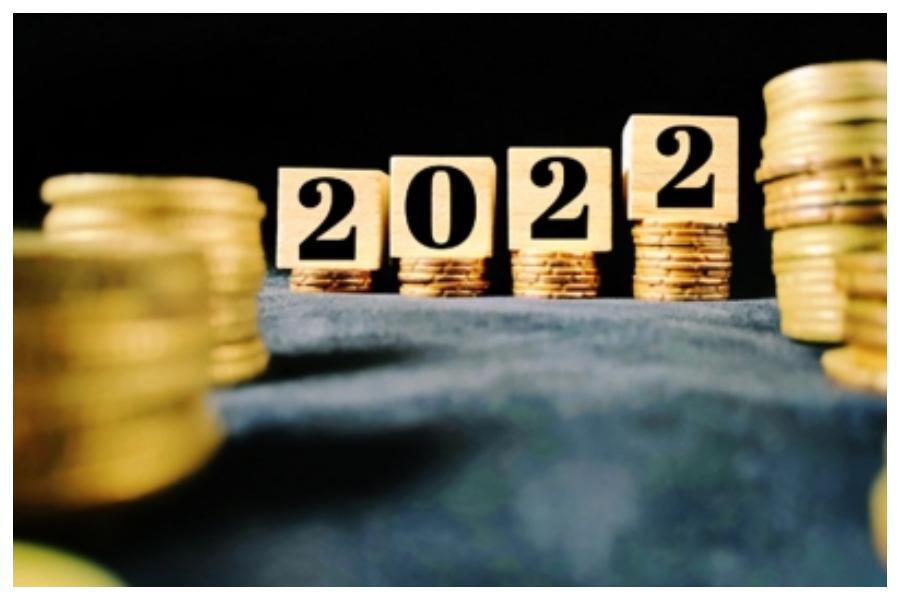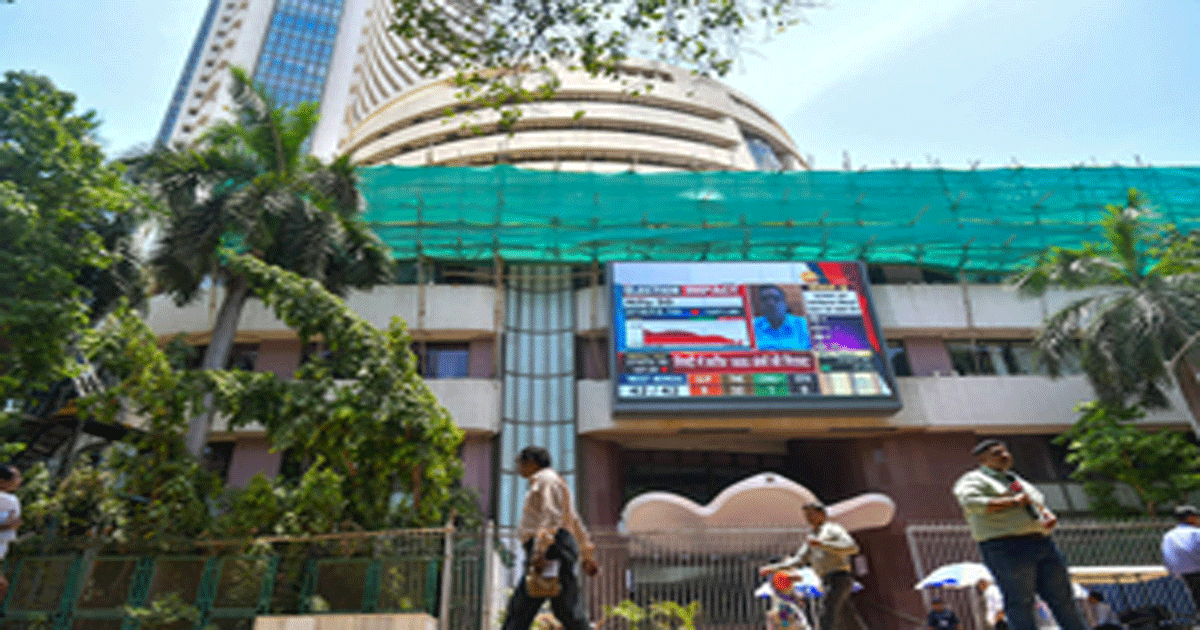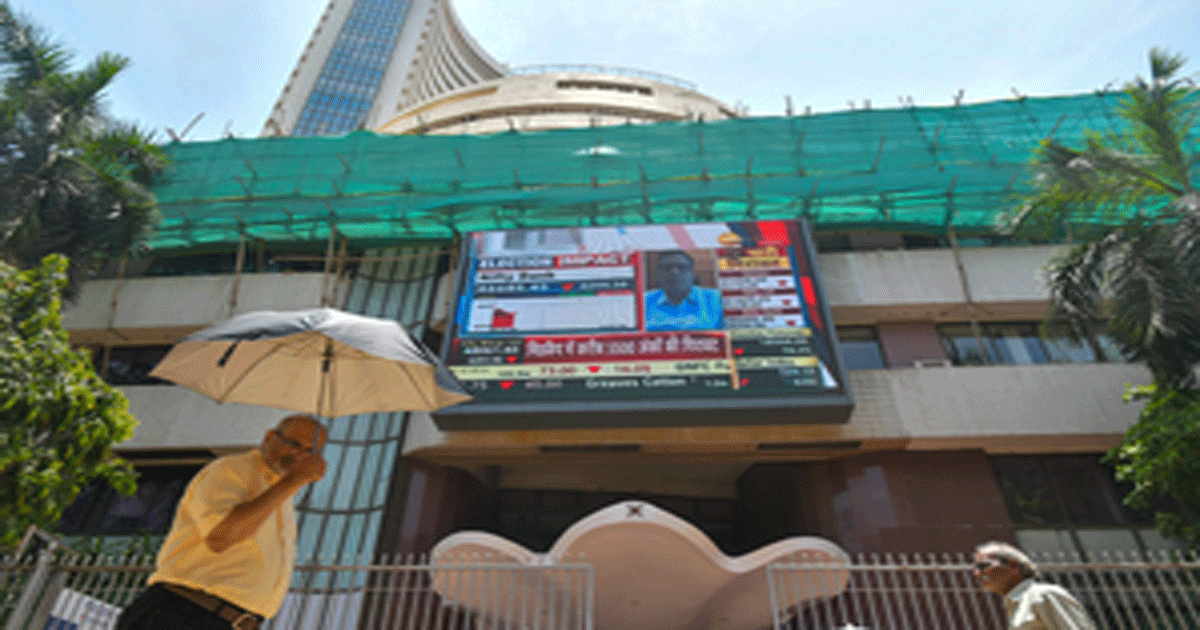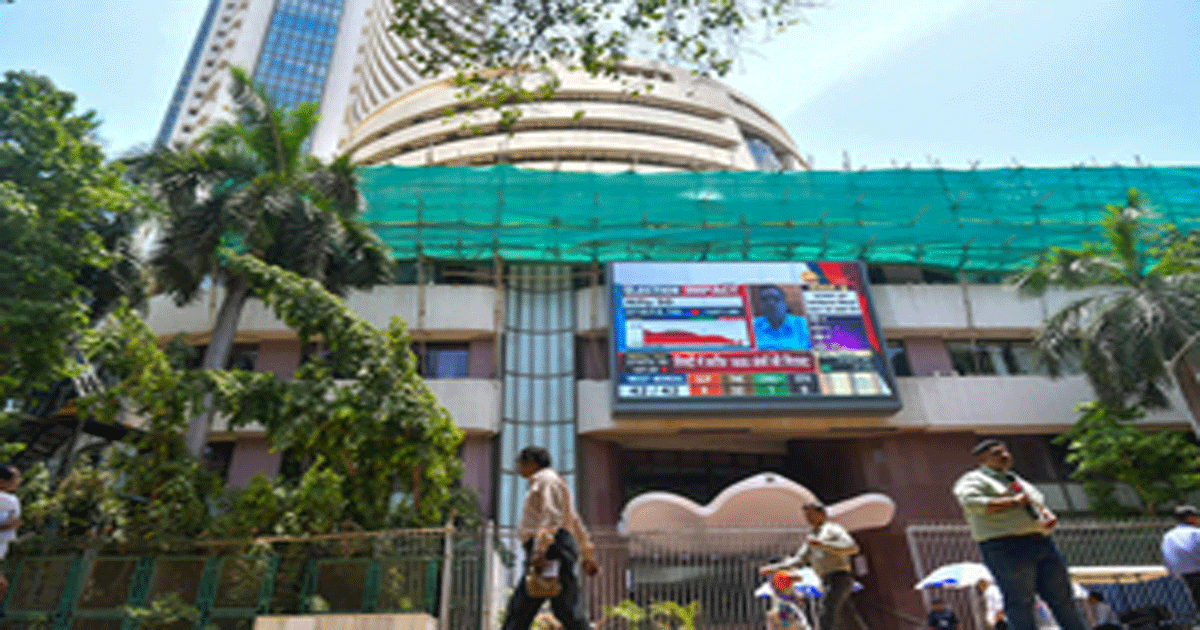Business
Budget’s growth focus to face macro challenges

The Budget is focused on growth, but will face macro challenges, Japanese brokerage Nomura said in a report.
First, the ability of the government — both central and states — to spend 2.9 per cent of GDP on capex will face execution hurdles. Identification of projects, on-the-ground implementation, coordination with different agencies — all typically lead to a smaller amount being spent than allocated.
Second, if revenues disappoint or other expenses rise (higher subsidies or more allocation towards rural employment, for example), then there is a risk of the capex amount being pruned.
Third, we see other growth challenges. India is currently in the midst of a business cycle recovery. However, we expect India’s growth to decelerate from H2 CY2022 onwards, reflecting weaker consumption demand from low income households (due to scarring effects and high inflation), weaker export growth and continued sub-par private capex due to low capacity utilisation.
Rising oil prices (a negative term of trade effect) and tighter global financial conditions are also growth headwinds.
Hence, if the capex-led push is not fruitful, then the growth slowdown could be material. We currently expect GDP growth of 8.7 per cent y-o-y in FY22 (reduced recently from 9.2 per cent owing to the impact of Omicron.
Nomura said we continue to expect higher inflation and wider current account deficits, largely due to rising commodity prices, although an expansionary budget may also play an incremental role. On inflation, while food prices appear in check, core inflationary pressures are rising across clothing, household goods and services and personal care items.
Firms are passing higher input prices onto consumer prices. Domestic fuel prices are currently on hold, but will likely be adjusted higher after the state elections. We expect services price inflation to also rise as the economy opens.
We expect elevated global commodity prices, high inflation and steady domestic demand to result in higher imports, widening the current account deficit to 2.6 per cent of GDP in 2022, up from a deficit of 1.3 per cent in 2021.
The Budget is unambiguously focused on reviving growth, via higher public capex. Capital expenditure generally results in a higher growth multiplier, so the continued focus on infrastructure spending, including support to states to spend on capex, is important at a time when private capex is sluggish.
The government expects to miss its budgeted fiscal deficit target of 6.8 per cent of GDP for FY22 (year ending March 2022) marginally, with an actual outturn of 6.9 per cent (Figure 1). The sharp rise in receipts of corporate taxes, robust income taxes and strong indirect taxes (in part due to higher fuel excise duties in the first half of the year) have resulted in net tax revenues exceeding budget estimates by Rs 2.2trn (1.0 per cent of GDP). However, contrary to our expectation, the government has revised up its capex commitment for the year by Rs 485bn (0.2 per cent of GDP), though this primarily reflects the government clearing its liabilities of the recently divested Air India. Also, in line with our expectations, revenue expenditure (revex) has been higher by Rs 2.4trn (1.0 per cent of GDP), reflecting the second wave support package, food and fertiliser subsidies, export incentives and extra spending by some departments. Finally, the disinvestment target has now been calibrated lower by Rs 970bn (0.4 per cent of GDP).
Business
Sensex, Nifty open lower amid weak global cues

Mumbai, Sep 24: The Indian benchmark indices opened marginally lower on Wednesday, on the back of weak global cues, with broad-based selling across all sectors, except PSU bank.
As of 9.21 am, the Sensex was down 289 points, or 0.35 per cent at 81,813 and the Nifty was down 87 points, or 0.35 per cent at 25,082.
Investor sentiments were weighed down by comments from US Fed Chair Jerome Powell about stagflation risks and elevated asset prices. Additionally, the impact of US visa curbs, ongoing foreign outflows, and persistent valuation concerns in domestic markets acted as headwinds for the stock exchanges.
The broad cap indices Nifty Midcap 100 dipped 0.45 per cent, and the Nifty Smallcap 100 lost 0.20 per cent.
Trent, SBI, Asian Paints, Maruti Suzuki, and ONGC are among the major gainers on the Nifty pack, while losers include Hero MotoCorp, Titan Company, Tech Mahindra, Tata Motors, ICICI Bank.
Among sectoral indices, Nifty Auto, the top loser, lost 0.71 per cent. Nifty IT (down 0.66 per cent) and Nifty Consumer durables (down 0.70 per cent) also weighed down on the indices. All other sectoral indices were trading in the red except PSU Bank which gained 0.37 per cent.
Analysts said that the global market is fraught with concern due to the elevated asset prices. Federal Reserve Chairman Jerome Powell hinted that the prices of assets, including stocks, gold, silver, and bitcoin, are currently high. He also reiterated the risks to inflation and employment, indicating that the Federal Reserve’s policy will be difficult to navigate in the future.
In India, even though the Nifty is around 4 per cent down from the September 2024 peak, valuations continue to be higher than the long-term averages. But these valuations will become justifiable when the earnings growth picks up, hopefully in FY27, they said.
The US markets ended in the red zone overnight, as Nasdaq dipped 0.95 per cent, the S&P 500 dropped 0.55 per cent, and the Dow lost 0.19 per cent in the last trading session.
Most of the Asian markets were trading in the green during the morning session. While China’s Shanghai index edged up 0.45 per cent, and Shenzhen advanced 0.92 per cent, Japan’s Nikkei dipped 0.43 per cent, while Hong Kong’s Hang Seng Index added 0.74 per cent. South Korea’s Kospi lost 1.21 per cent.
On Tuesday, Foreign Institutional Investors (FIIs) sold equities worth Rs 3,551 crore, while Domestic Institutional Investors (DIIs) were net buyers of equities worth Rs 2,671 crore.
Business
Indian stock market opens marginally up, Sensex above 82,000

Mumbai, Sep 23: The Indian benchmark indices opened with mild gains on Tuesday amid positive global cues, as buying was seen in auto, IT and financial service sectors in the early trade.
As of 9.22 am, Sensex was trading 122.13 points or 0.15 per cent up at 82,282.10 while the Nifty added 35.85 point or 0.14 per cent at 25,238.20
Nifty Bank was down 26.30 points or 0.05 per cent at 55,258.45. The Nifty Midcap 100 index was trading at 58,686.55 after dropping 12.95 points or 0.02 per cent. Nifty Smallcap 100 index was at 18,293.15 after gaining 4.25 points or 0.02 per cent.
According to experts, for the Nifty index, the resumption of near-term uptrend will depend on whether the slippages stretch beyond the 25200-25000 region or not.
Early moves may retain a positive bias if above 25238, but it would require a direct rise above 25278/335 region to attract momentum, they added.
Meanwhile, in the Sensex pack, Maruti Suzuki, M&M, Tata Motors, Infosys, HDFC Bank, Tech Mahindra and Axis Bank were the top gainers. On the other hand, Ultratech Cement, Sun Pharma, Trent and Asian Paints were the top losers.
In the Asian markets, Jakarta, Bangkok, Japan and Seoul were trading in green, while Hong Kong and China were trading in red.
In the last trading session, Dow Jones in the US closed at 46,381.54, up 66.27 points, or 0.14 per cent. The S&P 500 ended with a gain of 29.39 points, or 0.44 per cent, at 6,693.75 and the Nasdaq closed at 22,788.98, up 157.50 points, or 0.70 per cent.
According to analysts, the major drag on the market since the 2024 September peak is the sustained FII selling, which, in turn, is being triggered by the high valuations in India and attractive valuations elsewhere.
FIIs sold equity worth Rs 121,210 crore in 2024 and this year, they have sold equity for Rs 179,200 crore so far through the exchanges, they said.
The foreign institutional investors (FIIs) were net sellers as they sold equities worth Rs 2,910.09 crore on September 22, while domestic institutional investors (DIIs) purchased equities worth Rs 2,582.63 crore.
Business
Stock market opens marginally lower, Nifty IT down 2.68 pc

Mumbai, Sep 22: The Indian benchmark indices opened marginally lower on Monday, despite positive global cues, with IT stocks leading losses owing to some concerns over the new US H-1B visa rules.
As of 9.26 am, the Sensex was down 189 points, or 0.23 per cent at 82,772 and the Nifty was down 40 points, or 0.16 per cent at 25,286. Sensex and Nifty had opened with dips of 0.40 per cent and 0.33 per cent respectively, but later cut down on the losses.
IT giants such as Tata Consultancy Services (TCS), Infosys, Wipro, HCL Technologies, Tech Mahindra, and Coforge slipped in the morning trade.
The US government has clarified that visa holders returning to the country are exempt from the new $100,000 fee, which provided marginal relief to Indian IT companies.
White House said the visa fee would be a one-time payment, applicable only to new applications from the next lottery cycle (March–April 2026), and not on renewals.
The broad cap indices Nifty Midcap 100 dipped 0.05 per cent, and the Nifty Smallcap 100 lost 0.12 per cent.
The losers were Tech Mahindra, TCS, Tata Motors, Apollo Hospitals and Dr Reddy’s Labs.
Among sectoral indices, Nifty IT, the top loser, lost 2.68 per cent. Nifty Pharma (down 0.45 per cent) and Nifty Healthcare (down 0.33 per cent) also weighed down on the indices. All other sectoral indices were trading with marginal gains.
The Nifty index has held firmly above the 25,300 mark, closing at 25,327 in the previous session. It continues to trade above its key moving averages—the 20-day, 50-day, and 200-day EMAs—reaffirming the broader bullish undertone.
Analysts predicted that sentiment will remain positive as long as the index remains above these averages. Immediate resistance is placed at 25,500, followed by the 25,600 and 25,850 zones. The support lies at 25,150 and 25,000 zones.
They said that the market is likely to exhibit mixed behaviour, with the IT sector being affected by the H-1B visa issue and domestic consumption themes responding positively to the potential increase in consumption from lower GST rates kicking in from today.
According to them, the present low interest rate regime will aid the consumption boost and will also facilitate an increase in credit demand, boosting the profitability of financials.
Asia-Pacific markets mostly rose on Monday, tracking Wall Street’s gains from Friday and boosted by China’s key lending rate decision that kept key rates unchanged.
In the US markets, Nasdaq has added 0.72 per cent, the S&P 500 edged up 0.49 per cent, and the Dow inched up 0.37 per cent in the last trading session.
Most of the Asian markets were trading in the green during the morning session. While China’s Shanghai index edged up 0.07 per cent, and Shenzhen advanced 0.17 per cent, Japan’s Nikkei added 1.45 per cent, while Hong Kong’s Hang Seng Index lost 0.82 per cent. South Korea’s Kospi added 1.06 per cent.
On Friday, foreign institutional investors (FIIs) purchased equities worth Rs 390 crore, while domestic institutional investors (DIIs) were net buyers of equities worth Rs 2,105 crore.
-

 Crime3 years ago
Crime3 years agoClass 10 student jumps to death in Jaipur
-

 Maharashtra12 months ago
Maharashtra12 months agoMumbai Local Train Update: Central Railway’s New Timetable Comes Into Effect; Check Full List Of Revised Timings & Stations
-

 Maharashtra12 months ago
Maharashtra12 months agoMumbai To Go Toll-Free Tonight! Maharashtra Govt Announces Complete Toll Waiver For Light Motor Vehicles At All 5 Entry Points Of City
-

 Maharashtra12 months ago
Maharashtra12 months agoFalse photo of Imtiaz Jaleel’s rally, exposing the fooling conspiracy
-

 National News12 months ago
National News12 months agoMinistry of Railways rolls out Special Drive 4.0 with focus on digitisation, cleanliness, inclusiveness and grievance redressal
-

 Maharashtra10 months ago
Maharashtra10 months agoMaharashtra Elections 2024: Mumbai Metro & BEST Services Extended Till Midnight On Voting Day
-

 National News1 year ago
National News1 year agoJ&K: 4 Jawans Killed, 28 Injured After Bus Carrying BSF Personnel For Poll Duty Falls Into Gorge In Budgam; Terrifying Visuals Surface
-

 Crime12 months ago
Crime12 months agoBaba Siddique Murder: Mumbai Police Unable To Get Lawrence Bishnoi Custody Due To Home Ministry Order, Says Report












